This article is the based on information gathered throughout the years, martial arts training, application of tools, knife designing and production.
Originating in Indonesia – where it’s called the kerambit – the karambit (as it’s known in the Western world) is a C-shaped blade with a curved handle and a ring at one end.
Like many historic, edged tools, the karambit started as a farming tool and later evolved into a tactical weapon. Such C-shaped tools are thought to have originally been designed based on what people saw in the animal world, such as a tiger’s claw.
Variations on the Karambit
This ancient tool now has many variations – the only thing that has remained constant from the start is its C-shape.
There are three main sections to a karambit blade:
- A ring
- A frame or handle
- A blade
Beyond that, there are many differences. They include blades that are edged on the inside, outside or both; short and long-length blades; a “gut hook” on the outside curve near the point; wood or horn handles. Some even believe that some early karambit blades did not have a ring.
Changes Made in the United States
After the karambit made its debut in the United States, there have been many different designs from an assortment of manufacturers.
The biggest change is that the knife has gone from a fixed blade to a folding blade. Also, in the last few years, designers have tried to affix the name “Kerambit/Karambit” to a curved handle with a ring but add a straight blade.
This is likely because of the popularity and reputation of the C-shaped knife and the possible income stream it can create.
Despite all these variations, there is some misinformation that must be dispelled:
- A karambit is not a knife with a ring, a curve handle and a straight blade, whether it’s fixed blade or a folding knife.
- There is no such thing as a reverse karambit. Turning a karambit horizontally, vertically or 360 degrees will still have a C-shape.
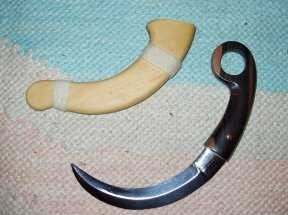
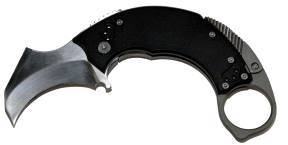
What is SNAG?
The SNAG from Krudo Knives is an S-shape folding or fixed blade knife and Controller (pain compliance tool) .The design is an attempt to modify and improve the karambit design.
Let’s talk about the folding SNAG first.


The concept started as a wood carving of a fixed blade, tested in classes and with fellow martial artists. Once that shape was finalized, Krudo designers moved into carving the folder shape and then into making actual steel prototypes. This is an extreme condensed description of the creation of SNAG. Today, SNAG is on fourth iteration.
SNAG folder is comprised of 4 parts:
- A Ring
- A Thumb Support
- A Frame or Handle
- A Blade (edge on the outside curve, ridges on the inside curve or No Edge No Point)
As opposed to a karambit, the SNAG folder blade folds completely into the shape of the handle. This makes for a more comfortable hold when the blade is closed. This also allows SNAG to be used as a pain compliance tool before deploying the blade, if you are carrying the live blade version.
The thumb support is a unique feature which, when deployed (blade open or closed), allows you to place your thumb on top of the support. This puts your hand in a very comfortable grip. The thumb support can be used for striking or for leverage, depending on the intended use of SNAG.
Because of the S-shape, the live blade version will slice/cut as opposed to the karambit C-shape blade which is made to stab/cut/rip.
At the same time the S-shape design allows SNAG Controller, non-live blade version, to be used not only as a practice knife but also a full function pain compliance tool – something a karambit C-shape blade cannot do.

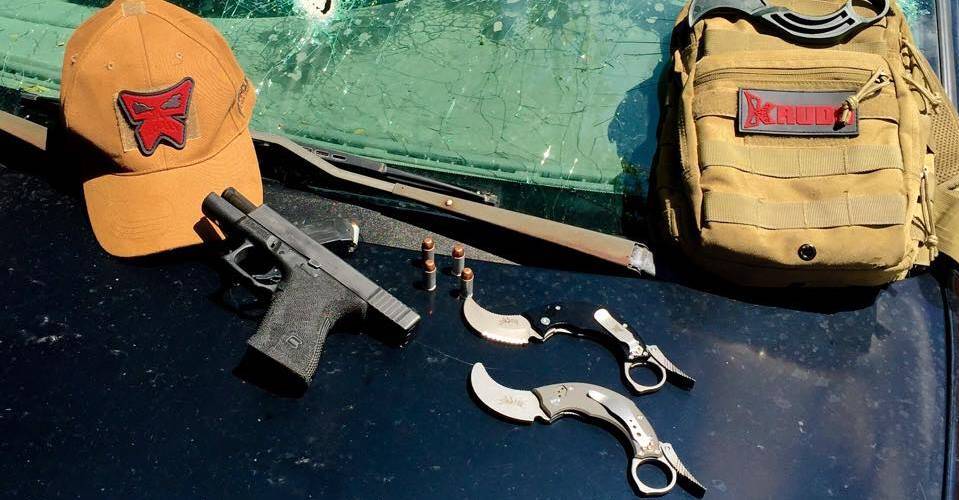



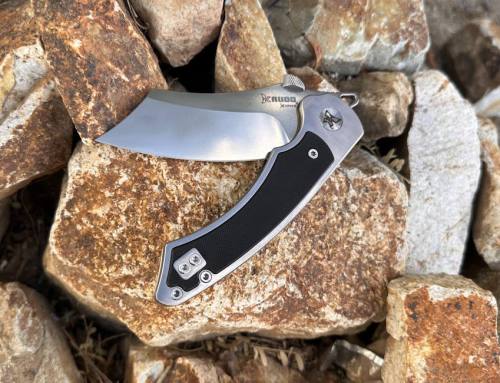
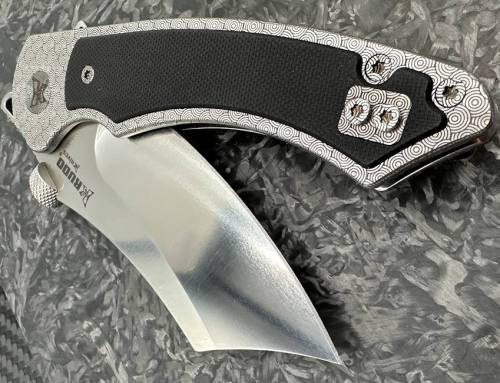
Can you put some pictures of your unique designed knifes being held in hand for use, like the SNAG, MMF, etc. It would help for interest in them cause I am sure.
Great Idea! We will work on some updated pictures.